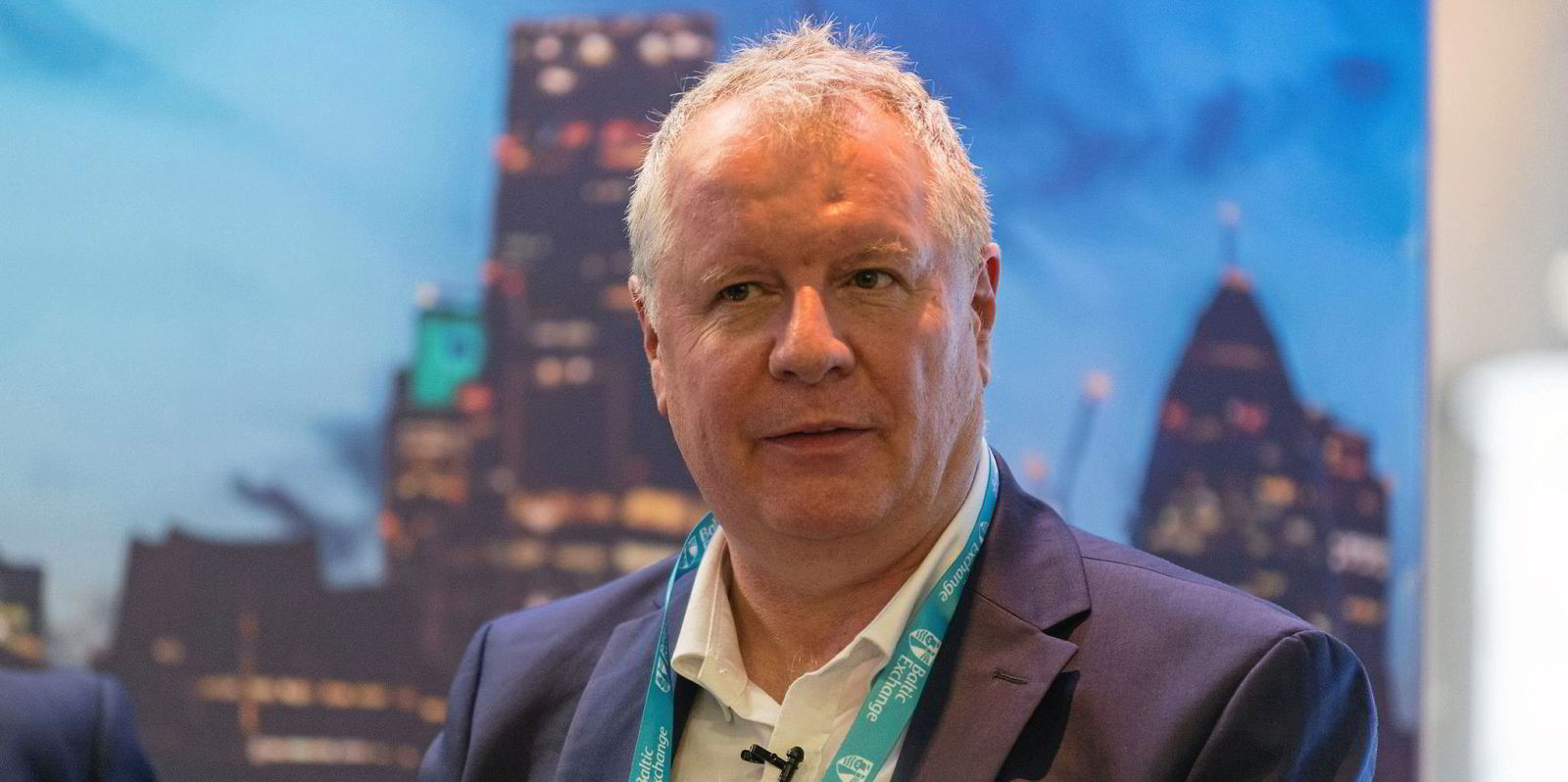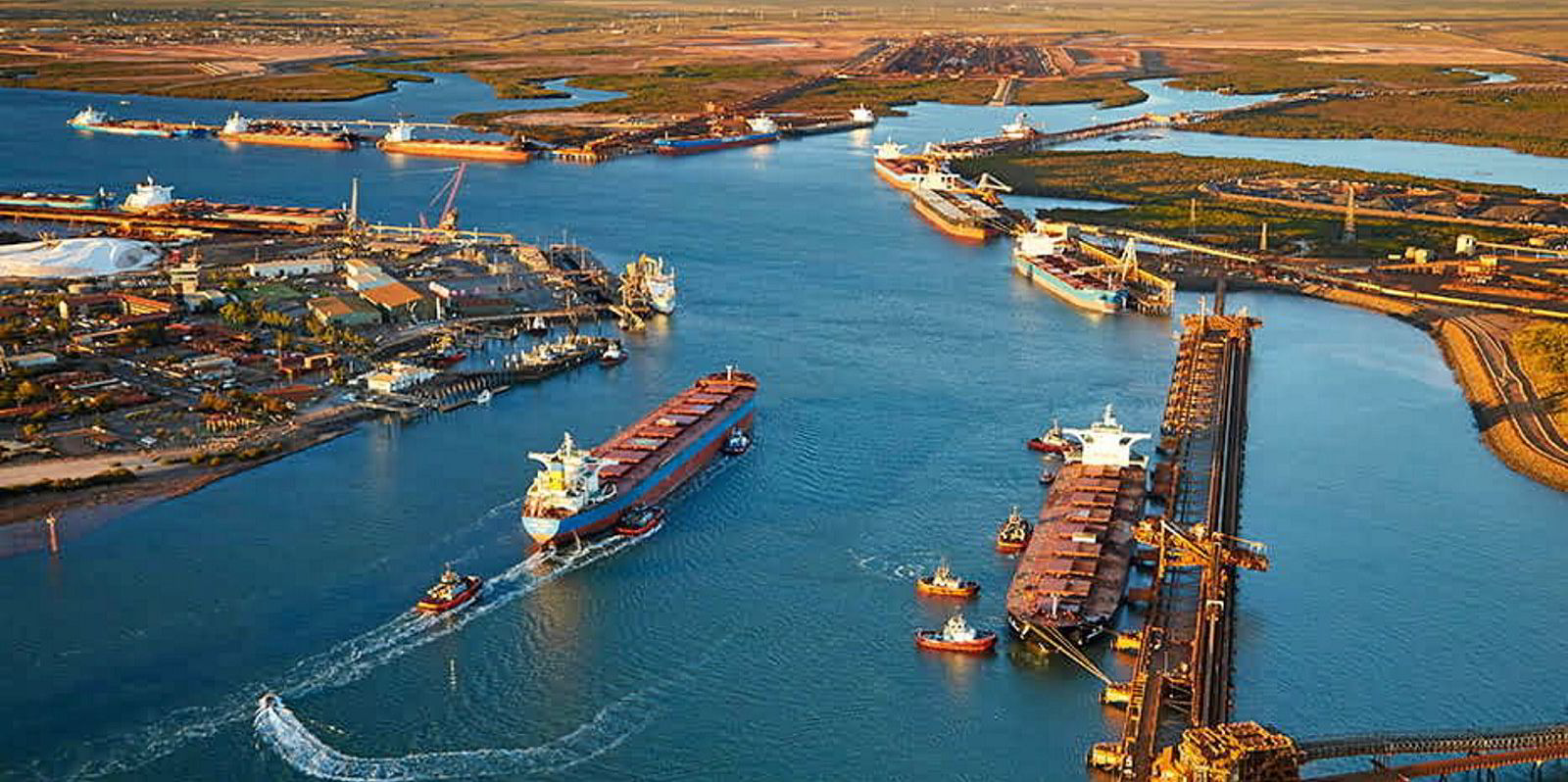Is the Independent Freight Forward Agreement Association (IFFAA) a rebellion or a restart?
That has been the question ever since the body launched earlier this year, in parallel with the Baltic Exchange’s existing Forward Freight Agreement Brokers’ Association (FFABA).
Taken at face value, a breakaway FFA association suggests some dissatisfaction with the current way the Baltic consults with the market.
John Banaszkiewicz, the freight derivatives supremo and founder of IFFAA, told TradeWinds: “The idea of this association is to help develop and broaden the current market and help the exchanges — particularly the Baltic — with these products.
“Obviously the industry has got really big. This year, we’re predicting there will be probably around 3.5m lots traded, I think the volumes are up 25%. That’s equivalent to sort of 7bn tonnes in volume of seaborne trade. It’s a huge market with very diverse players, from funds to banks to shipowners to charterers to steel mills.”
He added that a united voice will also help amplify the opinions, ideas and demands of smaller players too.
“There are probably hundreds of people now trading FFAs, and they can do that,” he said. “But I think it’s also important to be independent and have a voice. The Baltic is owned by SGX — it’s owned by an exchange.”
The IFFAA’s inaugural meeting in Geneva in early March gained a solid attendance from around 100 market participants and generated heated debate. Clearly, the IFFAA is tapping into unmet needs.
But not much has changed in the way the Baltic canvasses opinion from FFA market participants. The FFABA focuses mainly on brokers but has a mixture of other users on its committee. The Baltic’s more wide-ranging Freight Market Information Users Group was disbanded in 2015.
“What IFFAA’s doing is resurrecting that [users’ group] and getting the voice of everyone to work in a critical mass, and also a bit of firepower to help with things,” Banaszkiewicz said.
He said the Baltic has been “really positive” so far and sees the big opportunity for freight futures.
“It’s actually quite good for them to have a big group of customers,” he said.
The IFFAA has just announced its steering committee, which consists of 14 people representing funds, shipowners, charterers and brokers. Banaszkiewicz thinks this broad cross-section of market participants will be the IFFAA’s secret weapon. He wants brokers and traders to listen to each other.
“You want customers to tell brokers: ‘You need to improve accuracy on the forward curves and [make them] more timely’,” he said.
“And, vice-versa, brokers need to tell the users: ‘We want more bids and offers on the 5TC [capesize route] versus on 4TC’.”
Trading volumes in freight derivatives markets are at some of the highest levels seen since the 1990s and are growing at a rate of 20% to 30% each year, John Banaszkiewicz said.
Banaszkiewicz sees potential to grow liquidity in options trading and in the supramax paper market.
Key trade routes — for example, the C5 route for capesizes between Western Australia and China — still have untapped potential too.
“That will trade this year [in total] probably 100m tonnes, but the physical market is 700m to 800m tonnes, so we still see growth there,” he said.
This particular topic — how to increase trading of 5TC capesize derivatives rather than the old 4TC contracts — has been something that FFABA has aimed to do for the better part of 10 years. Finding ways to grow trading liquidity even further has been high on the agenda for the FFABA for some years now, too.
Discussions were initiated in Geneva on ways to improve liquidity in the options market and for handysize freight derivatives. Banaszkiewicz said there has also been a lot of discussion about carbon and the impact that will have on voyage rates and trade flows.
“We want to encourage more customers coming from Asia, particularly from China, who don’t tend to trade these markets as much. It is growing,” he said.
“And also we are getting a lot of financial players in the market, which have systems and algorithms to trade these products, so we also plan to cater for them as well.”
So far, the Baltic appears to have given its blessing to the new body. This month, chief executive Mark Jackson said his organisation “warmly welcomes” the initiative, according to a press release.
Banaszkiewicz himself has strong ties to the Baltic. He chairs the FFABA and sits on the Baltic Index Advisory Committee. He is also the chief executive and founder of Freight Investor Services, the leading broker for freight derivatives.
“I think I’m in a unique position to help get things done,” Banaszkiewicz told TradeWinds. “I’ve always been neutral and I always think of the industry first — I don’t have an agenda.
“I’m just trying to improve things so, being involved in the Baltic as well, I’m in a unique position to be kind of a go-between [for the two bodies] to help each other, that’s all.”
The Independent Freight Forward Agreement Association (IFFAA) this month announced the 14 companies that will be represented on its steering committee.
Members include representatives from shipowners Torvald Klaveness, Oldendorff Carriers, DryLog and Star Bulk Carriers; commodities players Cargill, Koch Industries and RWE Supply & Trading; financial players the Paralos Fund, Consortium Maritime Trading and Profision Capital Management; and shipbrokers Simpson Spence Young and Clarksons.
Industry veteran Philippe van der Abeele, head of investments at Consortium Maritime Trading, will chair the committee.
John Banaszkiewicz, founder of the IFFAA, will be a director of the new entity, which will be established as a limited company.




